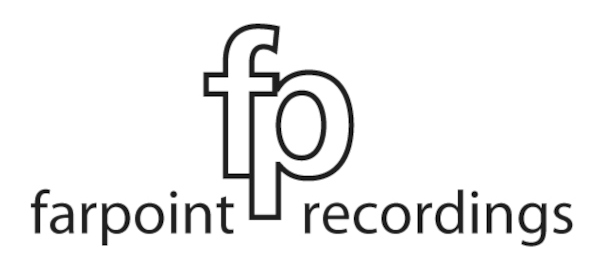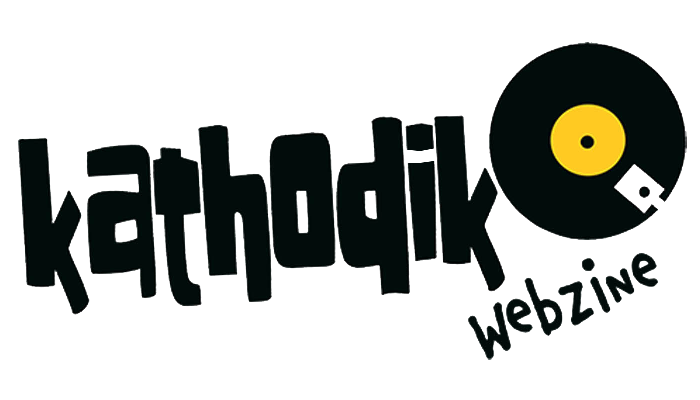
Farpoint Recordings is a Irish music label that has run many for years with its interesting productions featured in the digital world of Kathodik. The label releases work ranging from sound art, field recording, new music and improvised music that always features inventive packaging, well received on Kathodik. Also for Farpoint Recordings, as for the other interviews, I decided the time had come for a deepening of knowledge of the label and the philosophy behind it, and I interviewed Anthony Kelly and David Stalling, founders and directors of the label. Anthony and David talk about their artistic backgrounds, their collaborative process and how the label came about and much more, providing a fascinating look behind the scenes at Farpoint Recordings. Thanks to Eleonora Ottaviani for her help in the translation (photo by Bartosz Novak).
Here you can find the Italian translation
What are the origins of the Farpoint Recordings label? How did the idea come about? What were your inspirations? What models, if any, have you referred to?
We (AK & DS) collaborate on sound and visual works (as well as maintaining our own individual artistic practices), and we decided to create Farpoint Recordings as a platform to release small sets of handmade editions of our work. Making signed editions of 75 or 100 at first, it was very satisfying creating the audio and video works and then designing and assembling the cover art together. That’s how Farpoint Recordings began – with a hands-on DIY ethos that allowed it to put out releases fairly quickly. It grew from there, with more elaborate handmade editions, featuring artist friends like Artificial Memory Trace, Projector Collective, Alan Lambert and Jay Roche. The work was created in the spirit of collaboration, experimentation and openness – something we hope is maintained to this day. And there is still a continuation of the DIY ethos, as some of our more recent releases still require hand assembly.

Where is the label based?
Farpoint Recordings is based in Ireland, and since the beginning has taken a balanced approach to releasing work by national and international artists like Danny McCarthy, Mick O’Shea, Karen Power, Fergus Kelly, QME, Nad Spiro, Christina Kubisch, Steve Roden, Jed Speare & Stephen Vitiello. Artists working in the areas of sound art, new music, electronic and field recording practices, zones that are rich with creative possibilities. The core of the label is Anthony Kelly and David Stalling, and we collaborate regularly with artist and photographer Doreen Kennedy on the artwork presentations. We’re a small team managing to cover a lot of areas, including making the sound recordings, developing the artwork and promoting the releases.
How do you choose the releases?
It’s a fairly open process: we both try to keep an active ear to things happening out there on the margins. One of our early CD releases, a curated project called ‘The Sound We Are Now’, invited national and international artists working with creative sound to send us a track. This opened up lots of possibilities by creating associations and friendships, which are maintained to this day. Many releases grew out of the ‘Sound We Are Now project’. Sometimes we release work by an artist known and admired to us and have built up a trust and friendship with; people like Danny McCarthy and Mick O’Shea. Both have extraordinary individual art practices while also collaborating as The Quiet Club. Danny and Mick have guided us a lot over the years and sent many artists to our label – people like Linda O’Keeffe, Jed Speare and Stephen Vitiello, to name just a few. We’ve always appreciated their generosity and thoughtful ideas.
Sometimes we invite an artist who is creating exciting and innovative work to develop a new project with us. A lot of great stuff is happening in Cork as well as around the country, and we’ve been lucky to work with many terrific artists from there, like The Quiet Club, Irene Murphy, Quiet Music Ensemble, Harry Moore and Katie O’Looney. On occasion, artists discover our label and open a dialogue that leads to a future release.
Our releases often feature written contributions from curators, artists and writers including David Toop, Paul Hegarty, Dawn Williams, Jed Speare, Francis Halsall, EL Putnam, Seán McCrum, Benjamin Dwyer, Ian Wilson, John McLachlan and Steve Roden, either providing insightful artist notes or specially commissioned essays that complement the audio. We believe this approach enhances the work for our listeners.
Taking an open approach to developing our releases has served us well, bearing in mind that a ‘recording’ can come in different forms: a CD, vinyl record, magnetic tape, book, text or art print. We don’t really have a traditional record label business model, it’s more about a creative project between the label and the artists we are collaborating with. Every project has its very own criteria, requiring thoughtful discussion and listening over time to discover what is needed to create the final object. For us, this is often the most satisfying part of the project arc. Where possible, we like to get involved at the early stages, working directly with an artist making the sound recordings.
It would be great to say Farpoint Recordings has a master plan but there is none. At the same time, we’d like to secure more funding to further develop important areas of the label, such as physical and digital distribution, and of course to be able to better finance our future releases.
Why is it mostly CD releases?
On the surface it may look that way, especially of late. That’s really just due to the length of time required to develop and manufacture a vinyl record project. And of course they are quite costly. The humble CD may very well yet make a comeback. It’s actually quite a versatile media, suited to long form audio works. We’ve always tried to approach the packaging as creatively as possible in order to come up with presentations that hopefully are unique and collectable. We’ve done a number releases on formats that include, vinyl, cassette tapes, books, DVD’s, giclee prints, and lately digital via streamers and Bandcamp. Our main objective is to create critically acclaimed and collectable physical objects with a digital counterpart.
Do you plan for future vinyl releases?
Yes, absolutely, it’s always a preferred listening format with great opportunities for beautiful presentations as well. We are currently working with Joseph Young on what we hope will develop into a vinyl LP release that will form part of his ‘Sonic Hauntings in a Big House’ project. Joe is great to work with and has a lot of creative ideas about how things can sound and look. We are also planning a series of 7” records of field recordings and sound compositions drawn from our ongoing sister project ‘A Sound Map of Dún Laoghaire’. There is a vinyl release on the way from David Bremner and Brian Duggan called ‘Demonstrable Progress’. David and Brian also have a strong sense of what they are after with this release.

What do you think about co-productions between record labels? Do you think it is a viable option for your labels?
Yes, we have always been open to co-productions between labels and other organisations. In the past we have had associations and co-productions with Gruenrekorder, The Goethe-Institut Irland, Dublin City Council, The Crawford Art Gallery, The Guesthouse Cork, and the Mobius artist group, Boston. More recently we have been working together and sharing resources with William Blakeney from Ars Subtilior, Canada.
Do you think it is important to use social media to promote improvised music?
Yes, we find it a very useful tool for letting people know about what we are doing. It can be great to build a community of like minded listeners internationally.
How do you see the national and international improvised music scene?
There is a lot of great improvised music happening in Ireland by people like Fergus Kelly, David Lacey, Strange Attractor, The Quiet Club, Izumi Kimura, Cora Venus Lunny and supported by organisations like The Guesthouse, Cork, Kirkos Space and IMC, Dublin. Broadcaster Bernard Clarke has championed many artists working in this field, profiling and playing their work during his radio shows on RTÉ Lyric FM. Bernard has also been a very loyal Farpoint Recordings supporter over the years. The Guesthouse has provided residency and performance platforms for numerous improvising artists. Over the years we’ve been lucky enough to have had projects supported by places like Cafe OTO, London and Harvestworks in New York.
Could you tell us something about some of your future projects?
We’re currently preparing a new release with Ensemble 0 (featuring Sylvain Chaveau, Florent Garnier and Jean Francois Garnier) and we think that’ll be a very beautiful piece. We’ve also been working closely with Katie O’Looney and Paul Kane on their forthcoming double album, ‘Earth, Air Water, Fire: A Poetry Soundscape’, featuring the beautiful paintings of Australian artist John Wolseley. There are solo releases in development, by Danny McCarthy, Mick O’Shea, Phil Maguire, and Victor Lazzarini. We’re also working closely with Benjamin Dwyer and Alison Koehler on a book and CD project called ‘Secret Space’. Just recently we’ve been collaborating with Judy and Conor Lovett of theatre company Gare St. Lazare to produce a recording of ‘How It Is’, Samuel Beckett’s final novel. Still early days on that one but we feel we have some great recordings with actors Conor Lovett and Stephen Dillane performing the text.
It’s great to be heading into the future with such diverse and inspiring projects!
Link: Farpoint Recordings Home Page
Link: Farpoint Recordings Facebook Page
Link: Farpoint Recordings Instagram Profile
